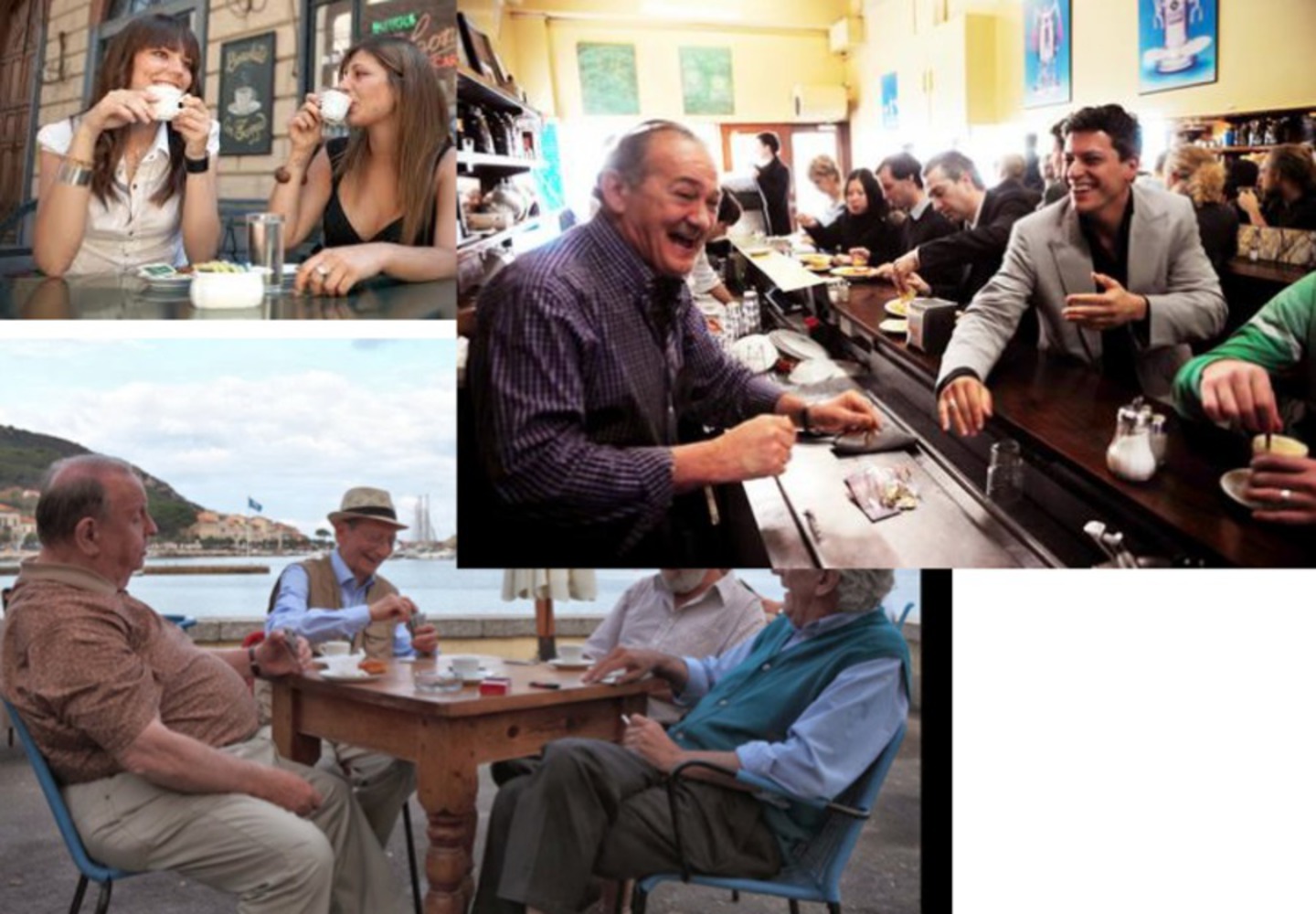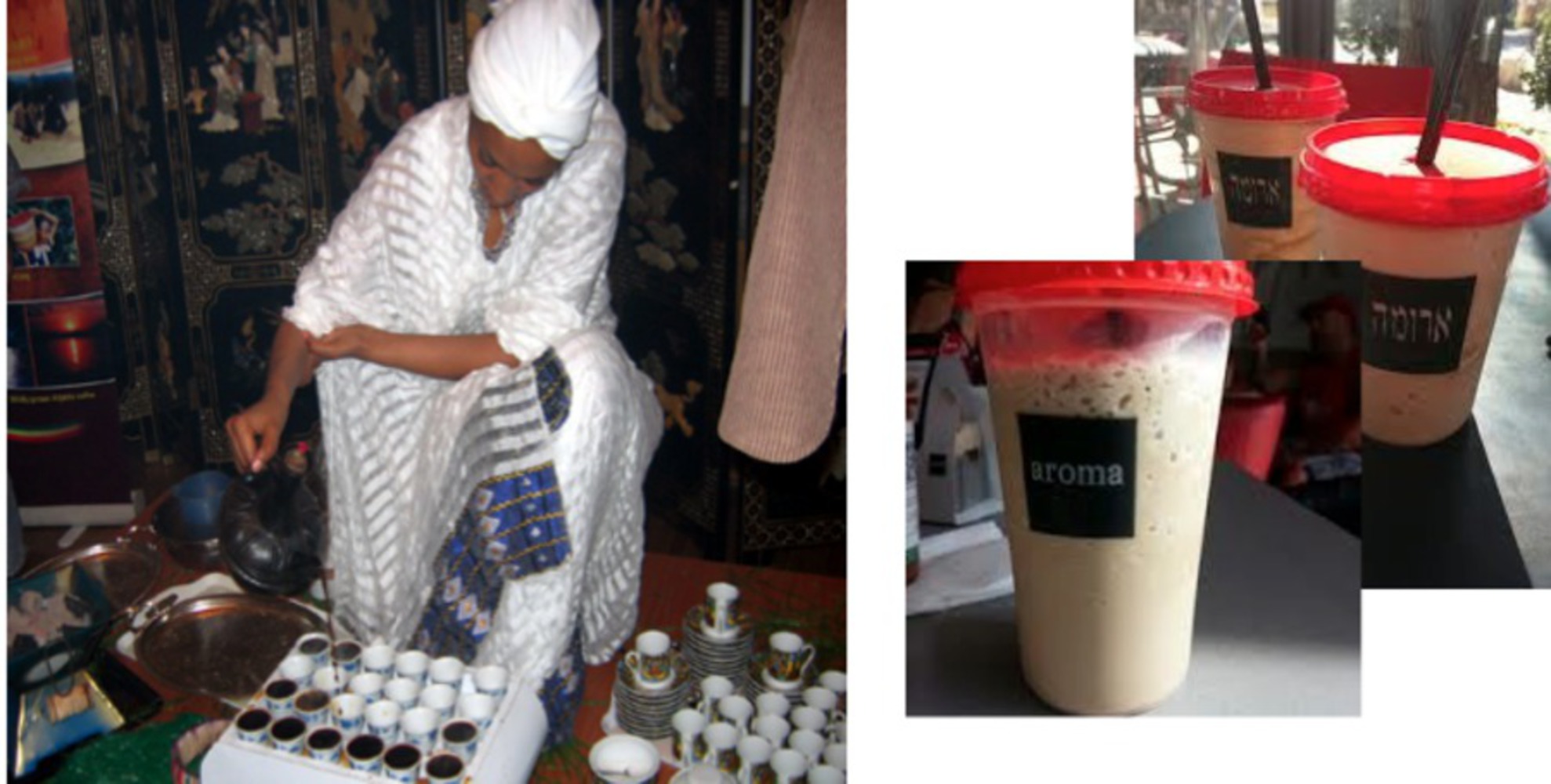There is so much data to be collected on the way in which different cultures drink coffee: when, where, how much, by oneself or with others, while sitting (on the floor or at a table) or standing or moving.
By using this data to create an installation that will allow us all to experience and understand coffee, we can bridge the “culture gap,” the “language barrier”. We can understand each other and our mentalities through a ritual as simple and yet as complex and specific as coffee.
The Installation: will be created carefully to fulfill the guidelines supplied by the data. It will represent each culture and the way in which each culture experiences coffee in a way, and allow each person to physically experience the sensations of each culture's experience, and understand the implications of this. This way in which the "numbers" will be the core of an experience will be consistent with the Tufte guidelines for graphical excellence, while also allowing an interpretive stance. Not only will the eye "be encouraged to compare different pieces of data," as Tufte recommends, but the mind will be comparing the different pieces of experiential data.
To represent data provided from America: experiences will walk through a moving sidewalk in a dark room, and hear surround sound noises of the street and then of a typical office. Perhaps flashes of moving images and a small amount of simulated wind will give the effect of a fast-paced environment.
Then, in representation of the Italian coffee culture, experiencers will calmly and patiently sit at tables with other experiencers and conversations and social engagement will be encouraged. It will also be dark in this room, except a light at each individual table will allow experiencers to make eye contact and talk with those at the same table as them.
After sufficient time has passed, all experiences will be led to a room to experience a version of the Ethiopian coffee ceremony. Everyone will sit on evenly dispersed cushions on the floor, and will listen to and watch media of an actual ceremony. Instead of the entire room being dark, there will be a dimmed light evenly dispersed throughout the room.
>>Like some core concepts of Laurie Frick’s Data Art, these cultural experiences which are very distinct to many countries can be broken down into data and reassembled to tell a larger story. Instead of “self” reflection like Frick’s data, coffee is a cultural reflection.
>>This concept is more interpretive than presentational. It will not necessarily be able to integrate all aspects of the provided data in order to provide the experience, just as the Wind Map excluded some data to facilitate a “more poetic” experience. That being said, the data that is included will be accurate and extensive in accordance with the Tufte guidelines.
>> Similarly to Lazano-Hemmer's "Pulse Room", this installation is dependent on creating an intimate relationship between the experience and the experiencer, which allows the experiencer to understand the message - to understand each distinct culture.
>> This representation provides the experiencers with a "forceful point of view" because they will be placed into a situation in which they are completely immersed in the data, along with the natural assumptions that an installation focused on the data of a culture's coffee must begin with.


